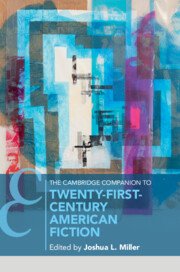Book contents
- The Cambridge Companion to Twenty-First-Century American Fiction
- The Cambridge Companion to Twenty-First-Century American Fiction
- Copyright page
- Contents
- Illustrations
- Contributors
- Acknowledgments
- Chronology
- Introduction
- Part I Forms
- 1 Short Fiction, Flash Fiction, Microfiction
- 2 Experimental Fiction
- 3 Speculative Fiction
- 4 Graphic Fiction
- 5 Digital Fiction
- Part II Approaches
- Part III Themes
- Further Reading
- Index
1 - Short Fiction, Flash Fiction, Microfiction
from Part I - Forms
Published online by Cambridge University Press: 02 September 2021
- The Cambridge Companion to Twenty-First-Century American Fiction
- The Cambridge Companion to Twenty-First-Century American Fiction
- Copyright page
- Contents
- Illustrations
- Contributors
- Acknowledgments
- Chronology
- Introduction
- Part I Forms
- 1 Short Fiction, Flash Fiction, Microfiction
- 2 Experimental Fiction
- 3 Speculative Fiction
- 4 Graphic Fiction
- 5 Digital Fiction
- Part II Approaches
- Part III Themes
- Further Reading
- Index
Summary
In her analysis of the rising prominence of recent short and flash fiction, Angela Naimou considers narrative brevity as an opening to geopolitical and temporal expansiveness in her chapter on “Short, Micro, and Flash Fiction.” Measured in major prize awards, sales, or downloads, short and short-short fiction have paradoxically thrived during the spatial and temporal conceptual expansions of, for example, globalization and the Anthropocene. Naimou identifies the techniques of short fiction representing planetary stories of migration, climate crisis, and evolutionary history in works by Teju Cole, Edwidge Danticat, Rachel B. Glaser, Viet Thanh Nguyen, and George Saunders.
Keywords
- Type
- Chapter
- Information
- Publisher: Cambridge University PressPrint publication year: 2021

